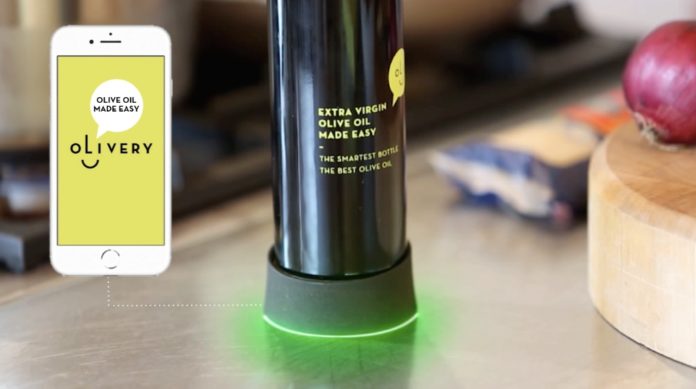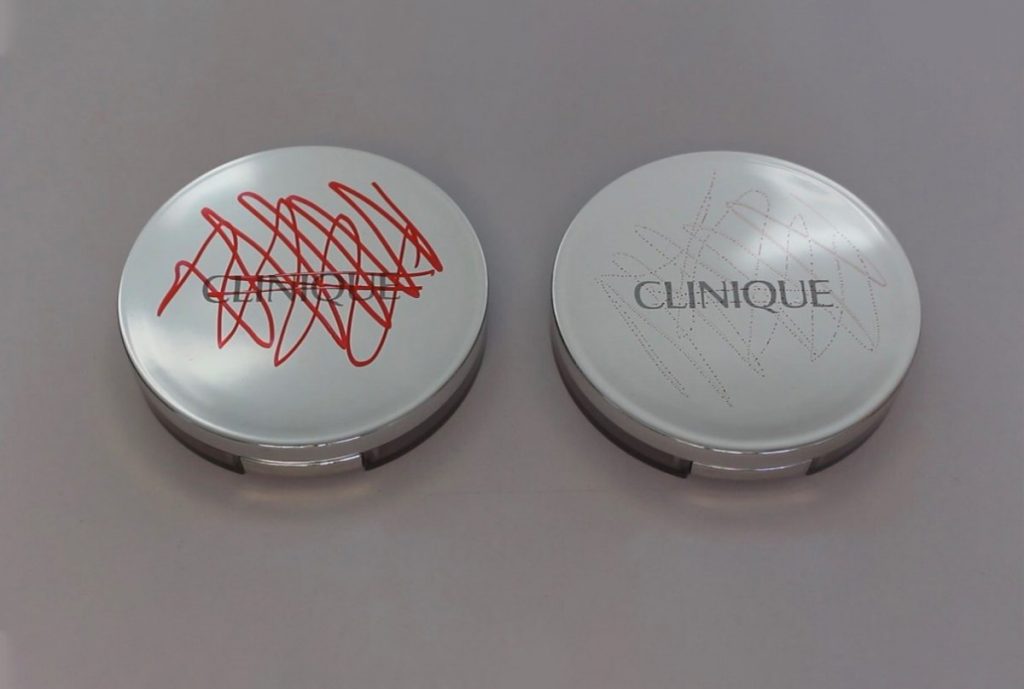Packaging requirements are growing in proportion to product requirements. Technology, speed, drive, quality — the compass life requirements show packaging standards to the level of awareness that packaging, if it is just packaging, has no future, and requires treating itself as separate, connected and complementary, but along with order — a unique standalone product.
We offer you an overview of the technological developments reflected in the packaging materials.
Coca-Cola uses OLED in packaging

On labels, issued in a limited edition of 700 glass bottles, the Coca-Cola logo lights up when touched. According to Inuru CEO Marcin Ratajczak, the labels were made in two stages. All4Labels used conventional inks and printing technology to produce pressure-sensitive paper labels, after which the labels were laminated with Inuru.
˜
We print both the source of light and the source of energy. When you touch the label, it seems that the circuit is closed between the energy source and the light source, causing the Coca-Cola label to light up,- comments the project Marcin Ratajczak.
˜
Packing without packaging

Malaysian inventor Zhafri Zainudin in the fight against food waste developed Stixfresh sticker that forms ethylene in the process of maturation. The sticker cover consists of a mixture of beeswax and ionized sodium chloride, has the status of a safe and, according to the manufacturer, it can be eaten.
40-50% longer life cycle packaging

The EU-funded NanoPack project is developing food packaging that increase the shelf life of products. The results showed that the film NanoPack increases the shelf life of cherries for two days compared to cherries, which were stored in a commercial film. The shelf life of baked goods without preservatives has doubled, which corresponds to an increase in the added value of the product by 50%.
˜
We are experimenting with a very wide range of products — fresh produce, bread and pastries, as well as milk and meat proteins. This means that we must determine the best concentrations and combinations of essential oils, as well as the most appropriate packaging formats for each of them, — said a representative of the scientific group NanoPack.
˜
WP Produce, an avocado importer, switched to new packaging with improved air circulation and ventilation, as well as ethylene filtration technology, extending the avocado storage time from 5-6 days to 9-11.

Apeel Sciences has developed an edible fruit coating that extends shelf life by controlling the rate at which water leaves the surface and the rate at which oxygen enters. The coating is made from natural lipids extracted from waste fruits or vegetables, including tomatoes, grapes, wasted seeds. These lipids are powdered, which can be reconstituted with water to create a drop or splash.
Packaging for flowers that do not require water

Uflex packaging, which operates according to the principle of active modified atmospheric packaging due to the special patented polymer film Flexfresh™. Flowers are put into slow breathing mode by reducing the availability of oxygen, preventing excessive oxidation and dehydration. The film retains the flowers, inhaling the humidified oxygen, and emits excess moisture, keeping them dry by touch. Flowers can remain without water for a significant number of days, as humidity returns and continues to breathe in the altered atmosphere.
Bottles of olive oil pass the baton
 Olivery is a crowdfunding campaign launched to introduce a smart system for refilling and spilling olive oil. The Swiss engineering agency Miron has developed a Violettglass, a special type of reflective glass that blocks all but two colors to slow down the oxidation process.
Olivery is a crowdfunding campaign launched to introduce a smart system for refilling and spilling olive oil. The Swiss engineering agency Miron has developed a Violettglass, a special type of reflective glass that blocks all but two colors to slow down the oxidation process.
The bottle of Olivery has an LED light that tells consumers when they run out of olive oil. After 80 percent of the bottle content has been consumed, the chip in the bottle communicates with the oLi mobile app on smartphones via Bluetooth to initiate a repeat order. In the second order, the consumer receives olive oil in small plastic bags, the contents of which are poured into the bottle of Olivery. The starter kit costs 49 Euro and includes a bottle and refill of 500 ml of oil.
Packaging that cannot be contaminated
 MetaShield has developed a fully transparent nanotechnology-based coating that repels significant amounts of stains, dust and dirt. The formula can be applied to most surfaces, so it can be a solution for many other consumer products in industries where it is important to keep the surface components clean, such as electronics and a growing number of sensors.
MetaShield has developed a fully transparent nanotechnology-based coating that repels significant amounts of stains, dust and dirt. The formula can be applied to most surfaces, so it can be a solution for many other consumer products in industries where it is important to keep the surface components clean, such as electronics and a growing number of sensors.
Transition to smart covers
 Font Vella mineral water is equipped with a Coach2O widget that attaches to the bottle cap, remembers the amount of water poured from the bottle, and reminds you to drink to maintain the level of hydration of the body using a series of blinks.
Font Vella mineral water is equipped with a Coach2O widget that attaches to the bottle cap, remembers the amount of water poured from the bottle, and reminds you to drink to maintain the level of hydration of the body using a series of blinks.
 Startup Microlyscs invented CrazyCap — a removable cap for refillable bottles for the purpose of cleaning water from lakes and rivers. The device has an omnidirectional design and emits ultraviolet light, which kills up to 99.9999% of bacteria, mold, viruses and algae that may be present in the water, without the need to replace filters.
Startup Microlyscs invented CrazyCap — a removable cap for refillable bottles for the purpose of cleaning water from lakes and rivers. The device has an omnidirectional design and emits ultraviolet light, which kills up to 99.9999% of bacteria, mold, viruses and algae that may be present in the water, without the need to replace filters.
Wine with a thermometer

The Australian company Taylors Wines offers touch sensors and temperature gauges on its packaging to demonstrate the importance of keeping the bottle in the refrigerator for 30 minutes before opening. The packaging uses thermal ink that changes color when the temperature is released.
˜
This is a huge category of opportunities for retailers. By educating consumers about the importance of maintaining temperature, you can help them find out how pleasant and refreshing red wines can be, especially during the summer months, — says project manager Mitchell Taylor.
˜
RFID development in retail

Stora Enso has unveiled a new retail solution for automated and unmanned retailers that integrates in-store purchases and online purchases using robust RFID tags for wireless authentication and payment. The system is based on Stora Enso smart cabinets: RFID-enabled electronic kiosks for on-the-go shopping with smartphones. All products stored in the cabinet are labeled with an RFID label.
HP integrates RFID into the smart packaging of its printers.
˜
Instead of a large number of printed materials attached to each new printer, including DVD-Rom, each new product can provide the buyer with additional information via a smartphone with an already installed application for reading links, — commented the development of Kami Saidi, Head of HP manufacturing and supply chain for Latin America.
˜
Nephron Pharmaceuticals embeds UHF RFID tags in labels that are applied to its pre-filled syringe products. Using this technology, the company can help its customers more effectively and safely manage inventory, eliminating the need for manual checks when restocking and issuing. The company’s healthcare provider clients read tags using RFID Kit Check readers and use Kit Check cloud software to manage data about each product.
To block the leakage of RFID signals, Avery Dennison Performance Tapes introduced the ShieldSense™ RFID blocking material, a lightweight, easy-to-use aluminum foil construction that, when applied to surfaces such as walls and doors, creates a barrier that isolates RFID waves for specific objects. By preventing radio frequency waves from entering the zone in the zone, retailers can get a clear idea of where the stores are located in the store, making it easy to adjust prices and replenish stocks, as well as determine the cause of inaccuracies.
Despite the fact that design still plays a leading role in most tactics for promoting products that require packaging, the importance of using technology with the growing use of smartphones, applications and switching to the product-to-consumer communication format increases with each passing day.
Do not forget that the new solutions provide good added value. Technologies guarantee the advantages of liquidity and convenience for the consumer, which opens up the prospect of future trend-cases of packaging for them.
